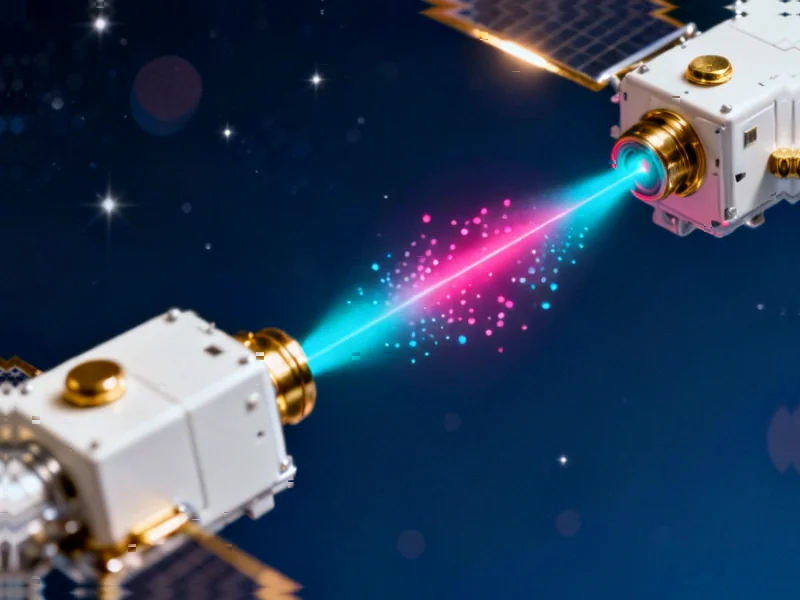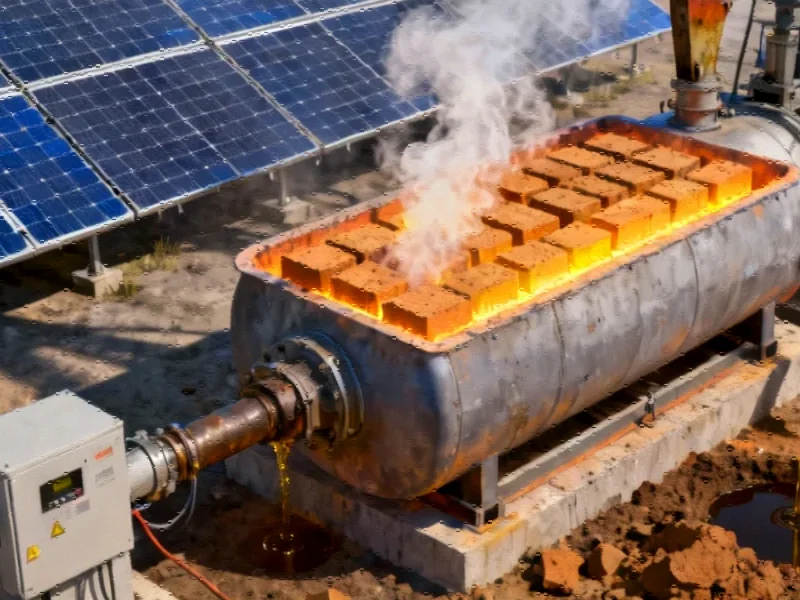The New Era of Space Connectivity
Space-based communication is undergoing its most significant transformation in decades as Muon Space prepares to integrate Starlink’s laser technology into its satellite constellation. This partnership represents a fundamental shift in how data moves through space, promising to eliminate the connectivity bottlenecks that have long hampered Earth observation and monitoring systems.
Table of Contents
Breaking the Data Transfer Bottleneck
Traditional satellite communication has been constrained by what Muon Space President Gregory Smirin describes as “this little straw of connectivity.” Current systems typically require satellites to transmit data to ground stations, creating significant delays and limited windows for data transfer. This approach has restricted the real-time potential of space-based monitoring systems for everything from climate tracking to disaster response.
The Starlink laser technology changes this equation dramatically, enabling direct satellite-to-satellite communication at speeds up to 25Gbps across distances of up to 4,000 kilometers. This creates what amounts to a high-speed internet network in low-Earth orbit, allowing data to flow continuously rather than in intermittent bursts.
Technical Breakthrough and Implementation Timeline
Muon Space will incorporate SpaceX’s mini laser terminals into its upcoming Halo spacecraft, with the first equipped satellite scheduled for launch in 2027. These are the same proven terminals that currently power Starlink’s global mesh network, which has been operating reliably for years. The technology represents a mature solution rather than experimental hardware, significantly reducing implementation risk.
“We’re providing five to ten times the capacity that the rest of the new space industry is providing, so this is a massive step forward,” Smirin emphasized in discussions about the technology‘s potential impact.
Real-World Applications: From Wildfires to Climate Monitoring
The implications extend far beyond corporate announcements aimed at potential customers. One of the most immediate applications involves Muon Space’s work as the hardware supplier for FireSat, a satellite system developed in partnership with Google and the Earth Fire Alliance designed to detect and track wildfires from space.
During recent wildfires in Los Angeles, traditional observation methods failed when smoke and high winds prevented aircraft from flying overhead. With laser-enabled connectivity, FireSat could provide continuous, real-time tracking of fire progression, enabling emergency responders to make more informed decisions about resource deployment and evacuation zones.
- Millisecond latency enables near-instantaneous data transfer between satellites
- End-to-end encryption ensures the security of sensitive observation data
- Persistent connectivity eliminates the gaps in monitoring that plague current systems
The Broader Impact on Space-Based Services
Smirin compares the shift to the transition from dial-up internet to always-on broadband connectivity. This persistent connectivity will gradually become visible to everyday users through improved weather forecasting, more accurate climate monitoring, and enhanced disaster response capabilities., as our earlier report
“Even in 2027, you’re going to start to see the impact of this kind of persistent connectivity on services that will be visible to individuals,” Smirin noted. “Space is becoming a ground truth enabler.”
Industry Implications and Future Prospects
As the first company outside of SpaceX to adopt Starlink’s laser technology, Muon Space positions itself at the forefront of what could become a standard approach to space-based data transfer. The success of this integration could pave the way for other companies to leverage existing space infrastructure rather than building proprietary communication networks.
The reduced latency and increased bandwidth also open new possibilities for applications requiring real-time data processing, including autonomous systems, global supply chain monitoring, and precision agriculture. As space-based connectivity becomes more robust and responsive, the distinction between terrestrial and orbital data networks continues to blur, creating new opportunities for innovation across multiple industries.
This partnership represents more than just a technological upgrade—it signals a fundamental shift in how we conceptualize connectivity and data transfer, with space becoming an integral part of our global information infrastructure rather than a separate, limited resource.
Related Articles You May Find Interesting
- Mixed Corporate Results and Renewed Trade Friction Rattle Tech-Heavy Markets
- Google Challenges UK Regulator’s Market Dominance Designation for Mobile Ecosyst
- Microsoft’s New AI Planning Feature Transforms Developer Workflows in Visual Stu
- Microsoft Commemorates 11 Years of Windows Insider Program with Exclusive Wallpa
- PowerToys Workspaces Solves Windows Layout Headaches for Power Users
References & Further Reading
This article draws from multiple authoritative sources. For more information, please consult:
- https://www.starlink.com/residential/cnet?referral=RC-DF-5246682-75930-55&utm_source=%5B%E2%80%A6%5Dum=affiliate&utm_campaign=affiliate_ziffdavis_editorial-cnet
- https://www.google.com/preferences/source?q=cnet.com
This article aggregates information from publicly available sources. All trademarks and copyrights belong to their respective owners.
Note: Featured image is for illustrative purposes only and does not represent any specific product, service, or entity mentioned in this article.



